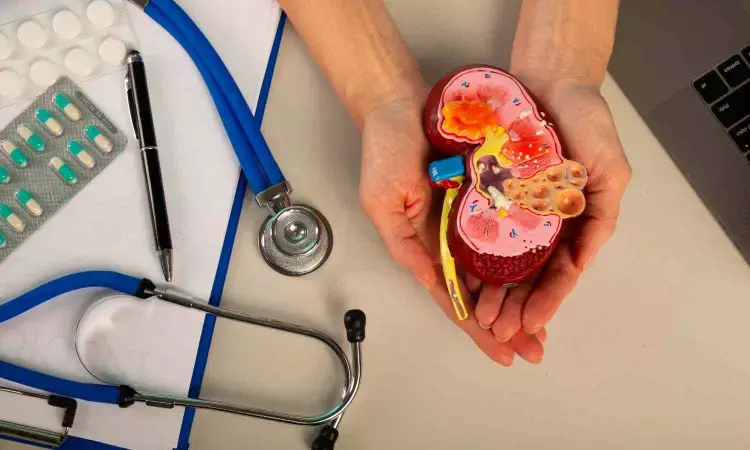- Home
- Medical news & Guidelines
- Anesthesiology
- Cardiology and CTVS
- Critical Care
- Dentistry
- Dermatology
- Diabetes and Endocrinology
- ENT
- Gastroenterology
- Medicine
- Nephrology
- Neurology
- Obstretics-Gynaecology
- Oncology
- Ophthalmology
- Orthopaedics
- Pediatrics-Neonatology
- Psychiatry
- Pulmonology
- Radiology
- Surgery
- Urology
- Laboratory Medicine
- Diet
- Nursing
- Paramedical
- Physiotherapy
- Health news
- Fact Check
- Bone Health Fact Check
- Brain Health Fact Check
- Cancer Related Fact Check
- Child Care Fact Check
- Dental and oral health fact check
- Diabetes and metabolic health fact check
- Diet and Nutrition Fact Check
- Eye and ENT Care Fact Check
- Fitness fact check
- Gut health fact check
- Heart health fact check
- Kidney health fact check
- Medical education fact check
- Men's health fact check
- Respiratory fact check
- Skin and hair care fact check
- Vaccine and Immunization fact check
- Women's health fact check
- AYUSH
- State News
- Andaman and Nicobar Islands
- Andhra Pradesh
- Arunachal Pradesh
- Assam
- Bihar
- Chandigarh
- Chattisgarh
- Dadra and Nagar Haveli
- Daman and Diu
- Delhi
- Goa
- Gujarat
- Haryana
- Himachal Pradesh
- Jammu & Kashmir
- Jharkhand
- Karnataka
- Kerala
- Ladakh
- Lakshadweep
- Madhya Pradesh
- Maharashtra
- Manipur
- Meghalaya
- Mizoram
- Nagaland
- Odisha
- Puducherry
- Punjab
- Rajasthan
- Sikkim
- Tamil Nadu
- Telangana
- Tripura
- Uttar Pradesh
- Uttrakhand
- West Bengal
- Medical Education
- Industry
Renal Dysfunction Raises Risk of Vertebral Fractures in T2DM Patients, reveals study

Researchers have demonstrated that renal impairment highly increases the risk of vertebral fracture among type 2 diabetes mellitus (T2DM) patients, according to data from a five-year longitudinal follow-up study. The research showed specific types of renal impairment such as low estimated glomerular filtration rate (eGFR) and proteinuria to be independently associated with a high fracture risk. These findings emphasize the need for closer follow-up and preventive measures for bone health in diabetic patients presenting with evidence of kidney disease. The study was published in Diabetes, Metabolic Syndrome and Obesity by Nandong Hu and colleagues.
T2DM is a proven risk factor for both chronic kidney disease and decreased bone mineral density. Vertebral fractures (VFs), typically silent but clinically significant, are more prevalent in this population. However, the direct longitudinal association between kidney impairment and vertebral fracture risk has rarely been explored. This study attempted to fill that gap by exploring the influence of different manifestations of renal dysfunction decrease in eGFR, proteinuria, or both on the risk of vertebral fractures in older persons with T2DM.
The research enrolled T2DM patients aged 50 years and older with no baseline vertebral fractures identified on CT imaging between January 2019 and December 2021. The cohort was monitored yearly until January 2024. Vertebral fractures were defined according to the Genant score system. Patients were stratified on renal function in three categories: no renal dysfunction, eGFR decrease or proteinuria, and eGFR decrease + proteinuria. 135 patients developing new vertebral fractures were identified and matched with 270 control non-fracture patients, on follow-up time and body mass index. Associations were tested with Cox proportional hazards models.
Key Findings
• 135 patients developed new vertebral fractures with a median follow-up of 2 years.
Renal dysfunction substantially raised fracture risk:
• eGFR decline or proteinuria: Adjusted Hazard Ratio (HR) = 1.98, 95% CI: 1.35–2.92
• eGFR decline + proteinuria: Adjusted HR = 2.53, 95% CI: 1.30–4.92
• Decreased bone CT attenuation (HU) was also associated with fracture risk: Adjusted HR = 0.97, 95% CI: 0.99–0.99
Subgroup analysis demonstrated that this correlation was more pronounced in:
Women
• Non-diabetic neuropathy patients
• Non-vascular complication patients
• Non-insulin therapy patients
Adding renal dysfunction enhanced prediction models:
• AUC increased from 0.817 (95% CI: 0.78–0.85) to 0.839 (95% CI: 0.80–0.87) (p < 0.05)
This longitudinal analysis concludes that renal dysfunction is a standalone risk factor for vertebral fractures among type 2 diabetic patients. Incorporating renal markers like eGFR deterioration and proteinuria greatly enhanced the performance of clinical models to predict fracture risk.
Reference:
Dr Riya Dave has completed dentistry from Gujarat University in 2022. She is a dentist and accomplished medical and scientific writer known for her commitment to bridging the gap between clinical expertise and accessible healthcare information. She has been actively involved in writing blogs related to health and wellness.
Dr Kamal Kant Kohli-MBBS, DTCD- a chest specialist with more than 30 years of practice and a flair for writing clinical articles, Dr Kamal Kant Kohli joined Medical Dialogues as a Chief Editor of Medical News. Besides writing articles, as an editor, he proofreads and verifies all the medical content published on Medical Dialogues including those coming from journals, studies,medical conferences,guidelines etc. Email: drkohli@medicaldialogues.in. Contact no. 011-43720751


